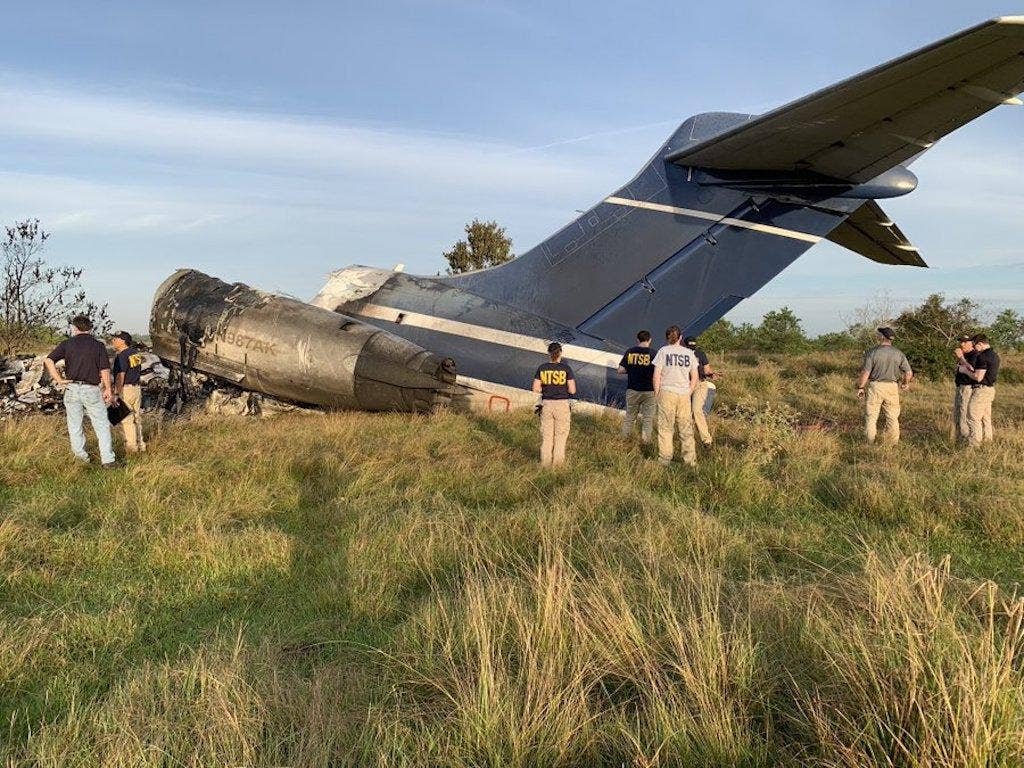Houston MD-87 Crash Survival: Miracle? Or Just Following The Rules?
News editors across the country were champing at the bit when a privately operated McDonnell Douglas MD-87 was reduced to smoldering aluminum and all 21 aboard escaped serious injury. But…

Photo: NTSB
News editors across the country were champing at the bit when a privately operated McDonnell Douglas MD-87 was reduced to smoldering aluminum and all 21 aboard escaped serious injury. But spoilsport Mary Schiavo, former DOT Inspector General and CNN aviation expert contributor, laid out some facts about survival statistics in airplane accidents, starting with: “It’s not as rare as you think.” In fact, a 17-year NTSB tally of airline accidents (1983 – 2000) found that the survival rate of crashes was 95.7 percent.
The exact cause of this accident remains to be determined. But the basics are that the crew of the corporate-configured MD-87—an aircraft that had not flown for at least nine months—tried to abort their takeoff from 6,610-foot Runway 36 at Houston Executive Airport, skidded over a road, then spun around after hitting power lines and trees. The flight mechanic on board opened the left front cabin door and initiated the evacuation via an inflatable slide. All 18 passengers and three crew members got out quickly. Specifically how quickly is not clear. But it was just in time to escape the flames that subsequently consumed all but the engines and tail feathers of the MD-87.
Schiavo revealed what many considered a miracle as basic common sense. "I'm going to give credit to both the Federal Aviation Administration,” she said, “and the International Civil Aviation Organization, which put in place the evacuation rules, you have to have enough doors and emergency exits on modern planes to get people out." No miracle, no magic. Just common-sense, lifesaving rules.
She went on to cite three more accidents—a 2005 Air France crash in Toronto, a 2013 Asiana flight that crashed on landing in San Francisco, and an Aeromexico flight in 2018—where technology-based safety features and evacuation protocols saved hundreds of lives each.
Schiavo added to her CNN remarks, "One thing you can say for sure is that the evacuation rule; having an adequate number of aircraft exits; and having materials that don't immediately catch fire in cabins with more flame-resistant materials without a doubt saves lives. And that's been well documented."
She added three more tips for passengers: Sit close to an emergency exit; wear “sensible” shoes; and keep them on your feet, at least during takeoffs and landings. "I see people boarding with flip-flops, and I think, ‘If you have to get up and run and you fall down or you can't run, you're not only going to hurt yourself. You're going to hurt dozens of other people on this plane.’
“So. Get some shoes."






